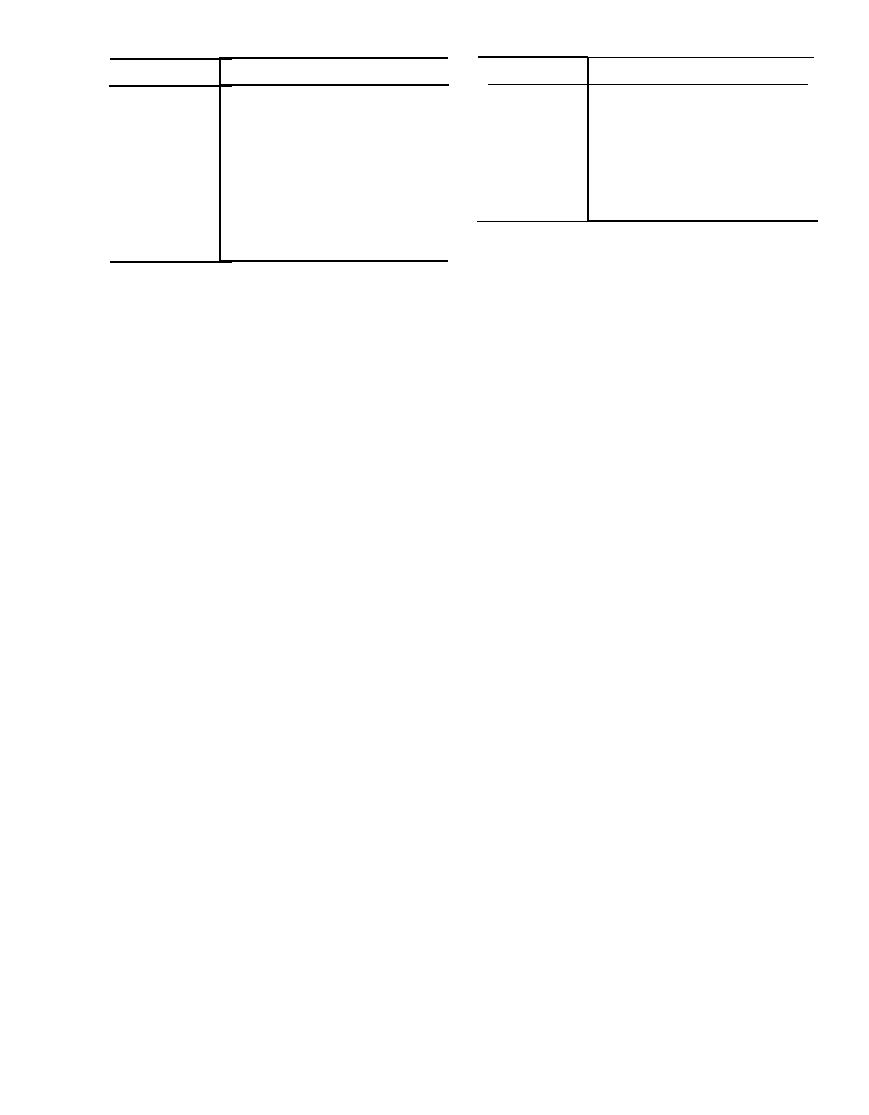
TM 11-5985-284-15
Function
Control or antenna
Function
Control or antenna
When extended, receives radio waves
Loop antenna - - - - - - -
When extended and in conjunction
Sense whip
for transmission through the AT-
antenna.
with the loop antenna having the
1082/PRC to the associated receiver.
o p p o s i t e edge of the loop an-
When situated broadside to the
tenna facing the transmitted signal,
transmitted signal, the signal is
de-termines (senses) the direc-
attenuated (null condition); con-
t i o n from which the signal is
versely, when situated so that the
transmitted.
edges of the loop face the trans-
mitted signal, the signal is not
attenuated.
Section Ill. OPERATION UNDER USUAL CONDITIONS
when the receiver is tuned to the area of
Caution 1: Use the AT-784/PRC for recep-
tile transmitter frequency.
tion only. Do not transmit when the AT-784/
b. Maximum Signal. The terms maximum
PRC is connected to the radio set; remove all
signal and maximum are used to define the posi-
other antennas from the radio set.
tion of the loop antenna. when it is so oriented that
Caution 2: Keep the ATTENUATOR switch
the greatest signal response (maximum signal) is
to O whenever the AT-1082/PRC is not in use.
heard in the receiver. This occurs when the sense
2-7. General
whip antenna is extended for sensing (d below).
a. Modulated and Unmodulated Carrier. Di-
At this time, a greater response is obtained on the
rection finding of, or homing-in on, a transmitting
receiver when that edge of the loop antenna op-
station is accomplished by detecting its modulated
posite the edge in which the sense whip antenna
or unmodulated carrier. Usually, it is better to
is mounted faces the transmitter. When the sense
home-in on the unmodulated carrier signal than a
whip antenna is retracted, signals of equal inten-
voice or test tone; the test tone or voice is best used
sity are obtained from either edge of the loop
when the transmitting signal is somewhat distant
antenna.
from the AT-1082/PRC. When the transmitting
c. Null Signal. The terms null position a n d
site is nearby, with the carrier modulated or un-
null are used to define tile position in which the
modulated, it is better to follow the carrier indica-
loop antenna is oriented when minimum or no sig-
tion rather than the modulation feature.
nal response is heard on the receiver. This occurs
(1) Modulated carrier. Modulation of the
when either broadside of the loop antenna is facing
transmitter carrier frequency occurs when
the transmitting station. The two nulls are de-
voice, music, test tone, etc., are trans-
fined properly when the sense whip antenna is re-
mitted.
tracted. The null gives a sharper or more ac-
(2) Unmodulated carrier. This action oc-
curate indication than the maximum sense position
curs when the transmitter is turned on but
(d below). Consider the loop antenna as an en-
the carrier frequency is not modulated by
larged gun-sighting device; it is necessary to look
voice, music, test tone, etc. On ampli-
through the hole formed by the loop antenna to-
tude modulation transmission (am), the
ward the transmitting station. This will be the
transmitter is detected by the quieting of
same direction as the maximum signal from the
the noise when tile receiver is turned in
edge of the loop antenna (d below). In the pres-
the area of the transmitter frequency.
ence of a strong signal, the null will be more
On frequency modulation (fm) trans-
clearly defined and quite narrow; the rotation of
mission, the transmitter is detected by the
a few degrees will produce sharp variations in
the received signal. On a weaker signal, the width
lessening or stopping of the rushing noise



 Previous Page
Previous Page
